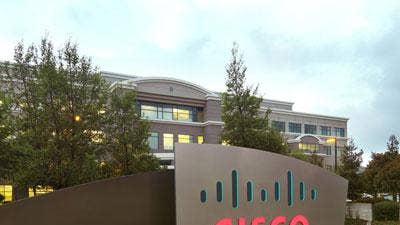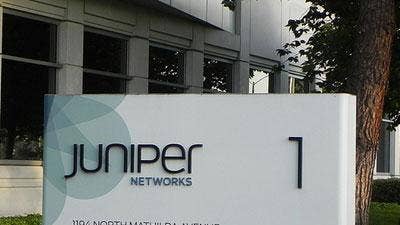CRN Interview: ThousandEyes VP Kedia On Juniper Partnership, And Bringing 'Some Semblance Of Control' To Enterprise Cloud Networking
ThousandEyes executive Ashwin Kedia speaks with CRN about how the company's new partnership with Juniper Networks will help enterprises move more quickly to deliver, develop and troubleshoot their networks.

Laser Focus
ThousandEyes and Juniper Networks have forged a partnership that brings constant monitoring to increasingly cloud-based and software-defined networks. Ashwin Kedia, ThousandEyes' vice president of business development, says the combination helps enterprises move more quickly to deliver, develop and troubleshoot their networks.
The joint Juniper-ThousandEyes offering is known as Cloud Customer Premises Equipment, and is part of Juniper's network function virtualization [NFV] platform. It is offered as a service on ThousandEyes' website, as well as through channel partners and managed service providers.
San Francisco-based ThousandEyes has had a similar partnership in place with Cisco Systems for about a year, and Kedia says the arrangements lower the total cost of ownership of virtual networks, and provide enterprises with a clear, simple way to gain insight into the performance of extended, cloud-based networks.
Kedia says the Juniper-ThousandEyes offering is a good fit for "laser-focused" solution providers that have deep relationships with their customers. "They need to have deep expertise and deep relationships with their customers and understand the pain the customer is going through on a global basis, not just in one office or two offices," he said.
What follows is an edited excerpt of Kedia's conversation with CRN.

What's the rationale behind this partnership?
The internet is becoming the backbone of many enterprises. They rely on it more every day, but they don't really have control or visibility into the internet, even though it's becoming a critical path to their success. We see that problem happening right in front of our eyes with the advent of cloud computing. There needs to be a solution providing some semblance of control, and at the very least, giving them the ability to monitor and analyze the performance of the extended network. That's where we stepped in. We offer a software solution that allows customers to monitor network performance, internal network as well as extended network. We allow our customers to truly monitor the network, internal and external. [We address] application delivery, infrastructure development, and provide the visibility they need to troubleshoot issues very quickly.

What's the earning potential for partners selling this?
Juniper is selling their platform, but if our services get included as part of that platform, or added on afterward by these partners, they absolutely stand to benefit by getting their normal channel discounts that we typically offer to our partners. We typically offer 25 percent. And that's annual. It's not just one-time. These are SaaS offerings, so it's a nice revenue stream that these guys can create for themselves.

How can channel partners most effectively bring this to market?
If you look at how Juniper operates, 70 percent of their revenue comes in from service providers and the large telcos. Almost all of these telcos have a big managed services business. In the past, Juniper has been selling to service providers to deploy their devices within the service providers and then the service providers would eventually use some other routers and switches for the end consumers and branch offices. With this NFV platform Juniper has created, now both Juniper and Cisco are able to provide NFV platforms to service providers to get deployed at the branch offices at their customers. The biggest benefit would be to the service providers, then all the partners, all the companies that work with these service providers to actually help manage these devices for their customers. There's a downstream impact here that is significant. That's where we think working with someone like Juniper is going to be extremely beneficial to our joint customers. They get access to managed service providers that can quickly deploy these devices and manage all the functions remotely.

What do partners need to know about ThousandEyes' customer base in order to be successful?
These are organizations that have a global footprint and they have workforces that are accessing applications that are hosted in the cloud, either in a hybrid model or in the public cloud. They're offering services to customers who are globally distributed, who are either facing service issues or performance issues not related to the services they provide. Our partners tend to be large, but we also work with laser-focused small partners. They need to have deep expertise and deep relationships with their customers and understand the pain the customer is going through on a global basis, not just in one office or two offices.

Does the networking industry's move to the cloud and software-defined technology make it critical for vendors to offer this kind of service?
More and more companies are moving toward the cloud, and it's all flavors of cloud. It's not just public or private or hybrid. There are many things that influence investment in network infrastructure, but the cloud movement is one of the biggest. Also, there are an increasing number of companies looking at SD-WAN investment and SaaS solutions. There is an increasing number of companies where technology is only being consumed in a SaaS model. All of this is outside the control of the customer and the infrastructure they have put in place.

Do customers have different expectations for the cloud than they do for on-prem solutions?
Everybody wants to benefit from the elasticity that they get with the cloud, and the Opex model they get in the SaaS model, but what has happened without them realizing it is that gradually the internet has become a critical component of their infrastructure even though they don't have any visibility into it and now there's a sudden realization that we need to have more visibility into the internet. Customers took it in stride that there would be some level of issues that they would face. But now that SaaS is here to stay, and cloud is here to stay, they're expecting a very high level of performance, as if these apps were on-prem, and the expectations from customers is to do something about this.

ThousandEyes has had a similar partnership with Cisco for about a year. What's attractive about adding Juniper to the mix?
It's really an exciting time for us to be part of Juniper's NFV platform that they're putting in place. It's an evolution of the service provider business model. Juniper and Cisco have been the leading NFV infrastructure vendors. It's all starting to come together with different market trends, customers demanding a better way to control, monitor and visualize the network. At the same time, they want the operational ease on the data center side, and also on the networking front. There is an expectation that more and more software will drive all of the networking function, and they want to make it as easy as possible. All the telecoms are moving in that direction.

How does working with ThousandEyes help Juniper?
This is really helping [Juniper] lower the total cost of ownership for service providers. It significantly reduces the time to deployment, and obviously it's an Opex model that they are able to offer to their customers. As long as products like ours are adhering to their interoperability and resource consumption requirements, we can slip into that model. With Juniper specifically, we're very excited about it because we are the only partner in their ecosystem that fits the requirements for network analytics and visibility.

What kind of growth have you seen over the last year with Cisco, and what kind of growth are you expecting with Juniper?
With Cisco, the benefit we've seen – and there's been increasing demand from customers – it makes it easier for customers to deploy our products on these devices that are on the edge of the network. With Cisco, we've seen a very nice uptake in customer demand, leads and opportunities coming to us because they've been actively referring customers to us. We expect something similar from Juniper as well. Juniper is known to have a big presence, a big footprint with service providers. With this partnership, we hope to provide a joint solution to all their service provider customers and essentially reach all of their customers directly through service providers and through partners. We are hoping that over the next 12 to 24 months the partnership is going to benefit our joint customers. Juniper is trying to create a footprint in the branch office.

Is ThousandEyes working with any vendors besides Cisco and Juniper?
These are the two primary ones we're working with as far as legacy networking companies are concerned. We do work with a lot of SaaS companies. Our typical customers are large organizations that have significant workforces and global customers: Microsoft, Cisco is a big customer of ours, as well as a partner and we expect the same from Juniper as well. We are pretty selective about our partnerships. The legacy networking companies see a mutual benefit. Along with that, we partner with very large SaaS companies like Microsoft, WebEx/Cisco, Salesforce. They need a service like ours to understand how the network is behaving for them from all of their points of origin.